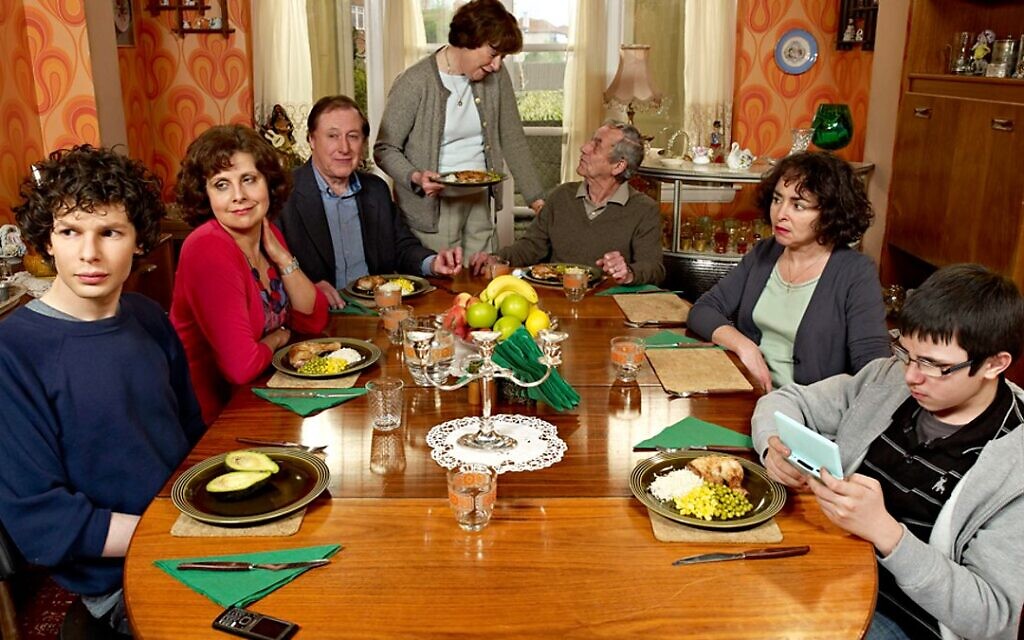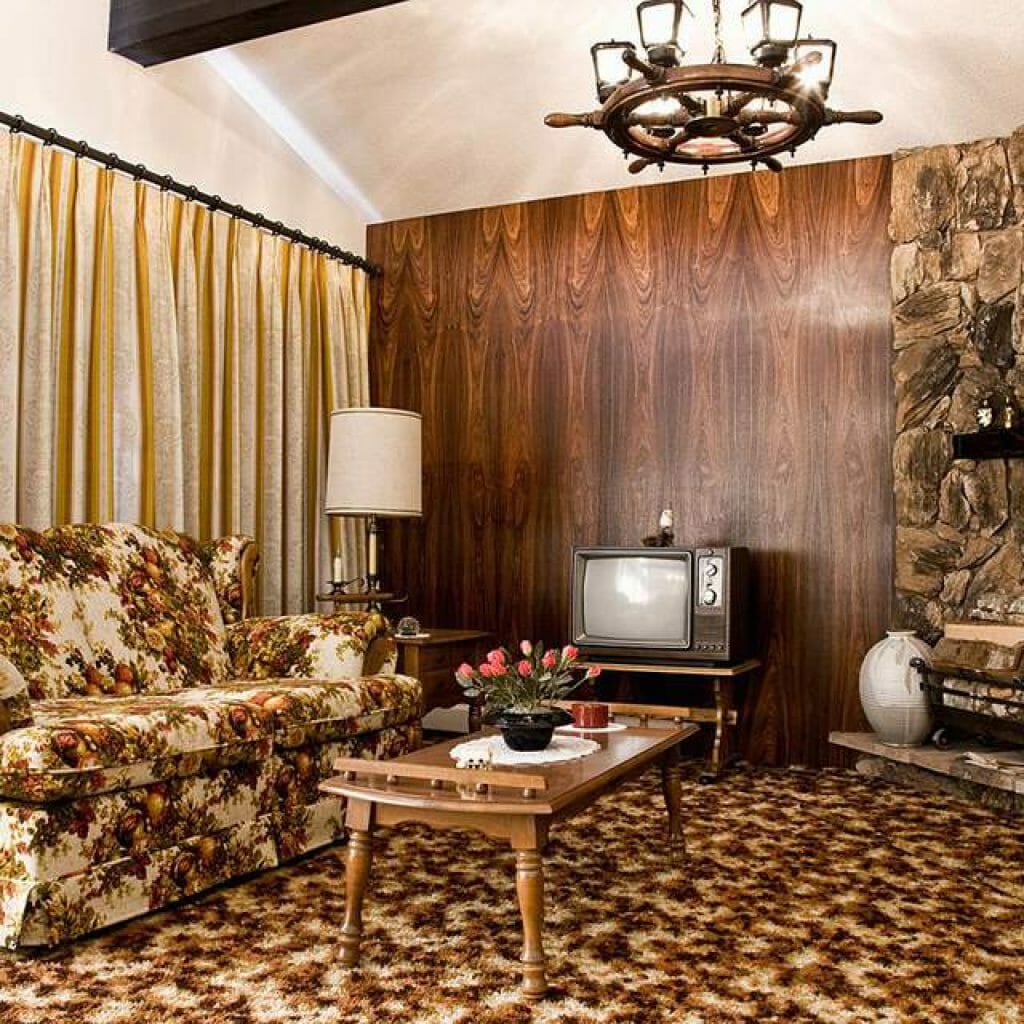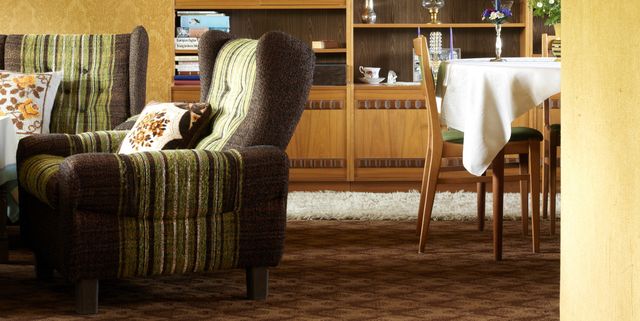Why was the through-lounge such a status symbol for Jews?
A humorous and nostalgic journey through 1970s suburban London

The ’70s was a transitional period for British Jewry, whose second generation started their upwardly-mobile trajectory from the east end to the suburbs, where they settled down in semi-detached houses. This extract, adapted from Martin’s book, considers how and why the through-lounge became a status symbol

I was sitting in the unique architectural heritage of my people: the Jewish through-lounge. Specifically, the Gants Hill Jewish through-lounge. I wondered why this uniquely Jewish through-lounge had been so successful and so pervasive among our tribe.
There are two facets to the Jewish through-lounge: The Container and The Contents.
Get The Jewish News Daily Edition by email and never miss our top stories Free Sign Up
The Container itself is universal to all Jewish through-lounges, because it requires more or less the same amount of demolition to create. However, The Contents, although conforming to a basic template, vary considerably from home to home. The Contents also vary considerably from one Jewish area to another, with significant differences between the Jewish suburbs of northeast London and northwest London, not to mention the isolated Jewish outpost in Southgate.
The role of The Contents in the Jewish through-lounge is to be the signifier of many things, reflecting the beliefs, politics, interests, concerns, social status and wealth of the householders. In this respect, the inspiration for The Contents can be measured on a sliding scale. From intellect, artistic bent, intelligence and broad-mindedness at one end, to ostentation, little taste, no original thought and the display of great wealth at the other end.
Concerning The Container: almost all Gants Hill parents have now knocked their front and back downstairs rooms into one, thus making the pervasive phenomenon of the Jewish through-lounge possible. They performed this demolition soon after leaving the East End and purchasing their new semi-detached homes in this outer suburb with the generally available mortgages, introduced by the Greater London Council to help build the post-war economy and generate social mobility.

Nobody knows the reason why they felt the urge to knock down walls the moment they had purchased their new homes. Maybe they had always yearned after a very large ‘showpiece’ room, and only now owned a house where they could fulfil these ambitions. Or only now owned any kind of accommodation.
The frenzy for wall demolition sometimes goes further, and chimney breasts and cornices are ripped out as well. Serving hatches are created between the kitchen and what was the dining room, and sometimes the entire wall between these two also goes. In fact, any feature taking up space, blocking one room from another, or interrupting an otherwise straight line of sight, is a candidate for removal.
From the French doors at the back to the bay windows at the front, an uninterrupted view can now be guaranteed in nearly every one of these homes. It is an all-pervasive architectural feature found in the majority of homes in Gants Hill and significant parts of nearby Southgate and further-afield Edgware. But why would anyone actually want to reduce the number of rooms in their home?
Perhaps there is a psychological explanation, something rooted in the anxiety of the wandering Jew. A manifestation of their subconscious expression of perpetual looming doom. After all, in a Jewish through-lounge, one can always detect any approaching Cossacks, Nazis, or Fascists. Its unique architectural style means that from any position, one can see who’s coming down the front path and about to bang on your door, or in the garden and about to smash in your French windows. A vantage point for early warning is possible from every part of your downstairs, whether watching telly, eating a meal, having a family Friday night Shabbat dinner, or just sitting and reading a book.

Or maybe it’s the result of a guilt complex caused by the dramatic economic changes achieved in just one or two generations. From when the first nomadic Jews lived in tents, to when an entire extended family lived in a wooden hovel in an Eastern European shtetl, to when they lived in one room in an East End tenement building, to today’s semi-detached suburban luxury, it might be that the Jewish through-lounge is in fact a subconscious recreation of that primordial tent and single shtetl room.
Or perhaps this single large space helps maintain a balance between the paternal and maternal forces of the Jewish family. Neither the male nor the female sides can create their own space and sphere of influence, and both sides have to co-exist.
On the other hand, it could be that the desire to create The Jewish Through-Lounge is nothing so psychologically deep and profound. It could be all about the demand generated by The Contents for more room to hold and display the increasing number of possessions and items. The Container addresses the need to hold recently acquired and ever-growing luxury goods, signifiers of intellectual pursuits and of material success.
Therefore, The Container and The Contents exist in a symbiotic relationship: The Contents require an appropriate space to display social, intellectual and financial progress, and The Container provides this.
The Contents are, at base and face value, a burgeoning panoply of domestic essentials for the glass-fronted display cabinets, coffee tables, Regency cabinets, Regency dining tables and. of course, those specifically Jewish contents: the Judaica. Now representing a new growth industry: gifts from Israel. These can rapidly fill any Jewish through-lounge – menorahs, Pesach plates, Shabbat candlesticks, kiddush wine cups, things that say ‘Shalom’, depictions of the Wailing Wall, those artistic-looking silky glass jugs with six matching glasses sets, ashtrays made from the same silky glass, and those cute little statuettes of various klezmer musicians and fiddlers on the roof.
The decor and interiors of all Jewish through-lounges follow several likely and closely related themes. An Axminster carpet with a heady swirling design. Lots of weighty wooden reproduction Regency furniture, one item of which encases the large colour TV. Rich velvet or Dralon throne-like three-piece suites. Ornate onyx and gilt coffee tables. An overlarge and ornate crystal chandelier, placed above the Regency dining table. Several reproduction Canaletto pictures of Venice, hanging on brocade wallpaper, each in a heavy wooden frame and lit by a little brass light fitting. The whole thing done out in an oppressive colour scheme of royal blue, gold and burgundy and gilt, gilt and more gilt. (Or is that guilt, guilt and more guilt?) The central heating is always turned up to the maximum setting. Throughout the whole year. With radiators that burn when touched.
The Contents could just be an expression of new-found affluence. These over decorated and gilded Regency rooms would have looked fine in the Palace of Versailles. But when crammed into a Gants Hill semi’s Jewish Through-Lounge, it is tasteless and unashamedly materialistic.
Budgie Wore My Jacket is available at WHSmith £9.20

Thank you for helping to make Jewish News the leading source of news and opinion for the UK Jewish community. Today we're asking for your invaluable help to continue putting our community first in everything we do.
For as little as £5 a month you can help sustain the vital work we do in celebrating and standing up for Jewish life in Britain.
Jewish News holds our community together and keeps us connected. Like a synagogue, it’s where people turn to feel part of something bigger. It also proudly shows the rest of Britain the vibrancy and rich culture of modern Jewish life.
You can make a quick and easy one-off or monthly contribution of £5, £10, £20 or any other sum you’re comfortable with.
100% of your donation will help us continue celebrating our community, in all its dynamic diversity...
Engaging
Being a community platform means so much more than producing a newspaper and website. One of our proudest roles is media partnering with our invaluable charities to amplify the outstanding work they do to help us all.
Celebrating
There’s no shortage of oys in the world but Jewish News takes every opportunity to celebrate the joys too, through projects like Night of Heroes, 40 Under 40 and other compelling countdowns that make the community kvell with pride.
Pioneering
In the first collaboration between media outlets from different faiths, Jewish News worked with British Muslim TV and Church Times to produce a list of young activists leading the way on interfaith understanding.
Campaigning
Royal Mail issued a stamp honouring Holocaust hero Sir Nicholas Winton after a Jewish News campaign attracted more than 100,000 backers. Jewish Newsalso produces special editions of the paper highlighting pressing issues including mental health and Holocaust remembrance.
Easy access
In an age when news is readily accessible, Jewish News provides high-quality content free online and offline, removing any financial barriers to connecting people.
Voice of our community to wider society
The Jewish News team regularly appears on TV, radio and on the pages of the national press to comment on stories about the Jewish community. Easy access to the paper on the streets of London also means Jewish News provides an invaluable window into the community for the country at large.
We hope you agree all this is worth preserving.
-
By Brigit Grant
-
By Laurent Vaughan - Senior Associate (Bishop & Sewell Solicitors)
-
By Laurent Vaughan - Senior Associate (Bishop & Sewell Solicitors)
-
By Laurent Vaughan - Senior Associate (Bishop & Sewell Solicitors)
-
By Laurent Vaughan - Senior Associate (Bishop & Sewell Solicitors)





















